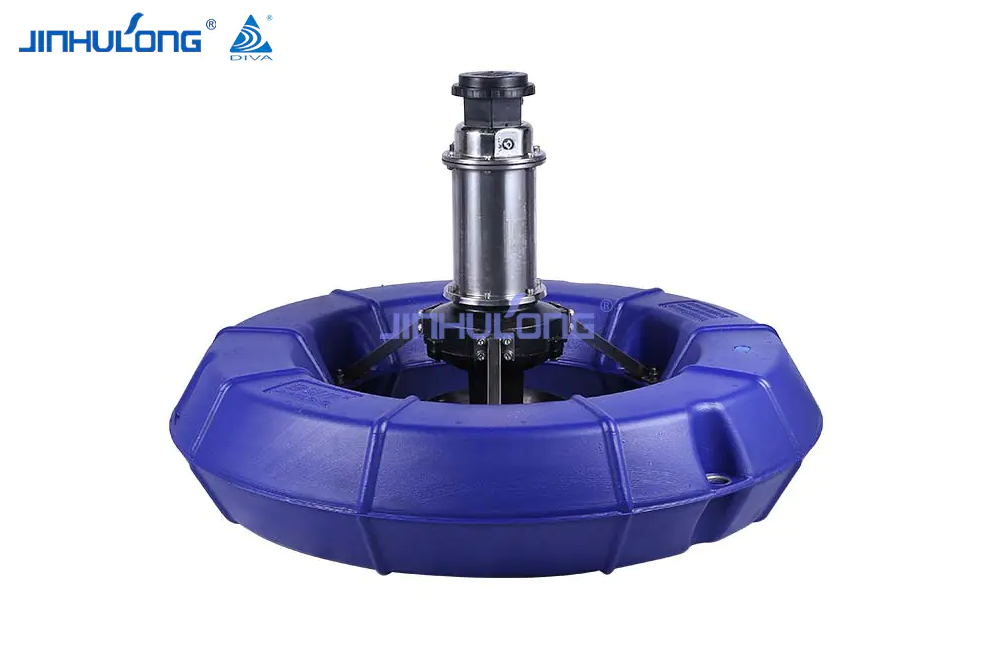In modern wastewater treatment and aquatic environmental management, the demand for more efficient and precise aeration technologies has led to the development of advanced systems such as the Circumferential Aeration Aerator. Unlike traditional aeration equipment, which often relies on fixed-directional airflow or simple bubble diffusion, it introduces a revolutionary approach to oxygen delivery and water mixing. This article explores the key differences between the Circumferential Aeration Aerator and conventional aeration devices, focusing on performance, design philosophy, application scope, and energy efficiency.
At its core, the Circumferential Aeration Aerator utilizes a radial or circular distribution mechanism to introduce air into the water column. Instead of releasing air in a singular vertical or linear direction, the system disperses bubbles uniformly in a 360-degree pattern around the unit. This circumferential dispersion leads to a much more homogenous oxygen distribution throughout the tank or water body. Traditional aeration systems, such as diffused aerators or surface paddle wheels, tend to create localized zones of high oxygen concentration while leaving other areas under-aerated. This inconsistency often results in dead zones, inefficient biological activity, and increased maintenance requirements.
Another significant distinction lies in the mixing dynamics. The Circumferential Aeration Aerator is specifically engineered to induce a radial flow that supports both vertical circulation and horizontal mixing. This enhances the contact between microorganisms and pollutants in biological treatment processes, which is critical in secondary and tertiary stages of wastewater treatment. Traditional equipment may struggle with complete mixing, especially in deep or irregular-shaped basins, leading to reduced process efficiency and sludge buildup. The radial flow pattern promotes a more complete and even blending of oxygen and substrate, facilitating faster degradation of organic material.
In terms of oxygen transfer efficiency (OTE), the Circumferential Aeration Aerator often surpasses conventional models. Due to its optimized bubble size and dispersion pattern, it achieves better oxygen solubility in water with lower air input. Smaller, uniformly dispersed bubbles increase the surface area of air contact, extending the residence time of oxygen in the water and allowing for more effective absorption. Conventional systems, especially those using coarse bubble diffusers or mechanical splashers, tend to waste significant energy in producing bubbles that rise quickly and inefficiently transfer oxygen before escaping the surface.
Energy consumption is another area where it shows clear advantages. Because it maximizes oxygen delivery with minimal airflow resistance and superior diffusion geometry, it requires less energy input to achieve the same or better levels of dissolved oxygen. Many traditional systems must compensate for poor dispersion with higher power motors or compressors, which drives up operational costs. In large-scale or long-term operations, the energy savings offered by the Circumferential Aeration Aerator can be substantial.
Additionally, maintenance and longevity present important differences. The Circumferential Aeration Aerator is typically designed with fewer moving parts and incorporates anti-clogging features, making it more resistant to biofouling and sediment accumulation. Traditional aerators, especially mechanical ones, often have exposed moving parts susceptible to wear, corrosion, or obstruction, leading to frequent downtime and increased labor for cleaning and replacement.
In conclusion, it represents a significant technological advancement over traditional aeration equipment. Its superior oxygen transfer efficiency, uniform radial dispersion, enhanced mixing capability, and lower energy consumption make it a highly effective solution for modern water treatment applications. As environmental standards grow more stringent and sustainability becomes a priority, adopting technologies like the Circumferential Aeration Aerator will likely become the industry standard in both municipal and industrial settings.
